Reviews
Frederick Wiseman
1986, USA
Credits
Review by Evan Kindley
Posted on 15 June 2008
Source Zipporah Films DVD
Categories Frederick Wiseman
Blind is one installment in a four-part series Wiseman shot in and around the Alabama School for Blind and Deaf in Talladega, Alabama. In its stylistic particulars, but also in the very gesture of making four films about a single institution, it inaugurates a change in tone, closely tied to a change in subject. To put it roughly, in the mid-1980s Wiseman turned from making films about institutions about which he and his core audience were typically skeptical (High School, Basic Training, Meat, The Store, etc.) to engage at length with one that few people of conscience, whatever their political tendencies, would seriously object to. While far more than an advertisement, Blind leaves little doubt that the Alabama School is a humane and progressive institution. Its goal is to educate blind youth both to cope with their disability and to enter the American workforce. Its students appear to come from a variety of socioeconomic backgrounds, and a substantial portion are African-American; its teachers and administrators seem uniformly competent and kind. Thus Blind is deprived of one of the primary sources of interest in many of Wiseman’s previous films—the ethical or philosophical interest of passing judgment on the institution itself.
What Blind loses in dialectical energy, however, it gains in existential power. One of its most remarkable aspects of the film is the amount of suspense and human drama Wiseman generates with just a minimal presentation of the children’s environment and their interactions within it. Among our first images of the student body is a curly-haired boy climbing the ladder of a playground slide in extreme close-up: “Please don’t catch me,” he calls out, as if acknowledging the audience’s instinctive concern for his welfare. Minutes later, in Blind’s most exhilarating sequence, a blond, chipmunk-faced boy named Jason (probably around 8 or 9 years old) is told to leave the classroom to go show his A paper to another teacher. The camera follows Jason out into the hall and towards a flight of stairs, which at first you’re not sure he’s meant to go down: it’s hard to suppress the impulse to leap out of your seat and divert him from trying. Camera operator John Davey follows Jason’s somewhat off-balance progress exactly, swerving when he swerves, stopping when he stops, recording every moment of difficulty and uncertainty along the way. The feeling of novelty imparted by this sequence is extraordinary. By this point in film history, we’ve seen a camera track someone down a hallway hundreds of times (possibly thousands if we watch The West Wing), yet this single take of such a simple action manages to hit new highs of emotion and suspense merely by making us think harder about what’s involved in such an action.
Much of Blind details this kind of painstaking learning and accomplishment. In a parallel sequence, a girl named Martha is led around by a teacher in order to learn the geography of the school. As with the Jason sequence, Wiseman uses very long takes, letting the action unfold in phenomenological real time. Martha feels the wall with her hand, also using a cane for the first time, encouraged and guided by her instructor. When they come to the door, the teacher quizzes her about the grounds outside: “What’s across from here?” She runs through some possibilities - the dorm, the gym, the “big boys’ dorm” - before finally being informed that it’s the latter. Later, she hears a noise and identifies it as a dryer. “Is there a dryer in the school building, though?” The degree of logical reasoning required simply to identify a random sound (which eventually turns out to be a water fountain) is enough to remind us of how often our senses let us get by without our intelligence entering into the equation at all.
In a sequence such as this it’s impossible not to pay equal attention to the teacher as to the student, an effect that carries over to later scenes which show older students in a more conventional classroom environment. We see kids learning skills specific to their condition (how to use a Braille typewriter or a cane, how to make change, how the partially sighted can improve their visual memory) as well as more familiar subjects (grammar, crocheting, biology, civics, music, baking, aerobics). Naturally the older students are quite a bit more adjusted to their condition than their younger counterparts, and in these scenes we see their interactions with teachers and each other as not dissimilar from any other high school. Even so, we’re still made aware, in an amplification of themes from Wiseman’s own High School, of the tremendous discrepancy in power between students and teachers; and while those teachers, as previously stated, they all acquit themselves remarkably, there is still something uncomfortable about being made aware of such stark inequalities. (Of course all teaching, to a greater or lesser extent, is founded on inequality: the difference is that, at least in theory, most students have the capacity for equaling or even exceeding their teachers in eventual accomplishment. For these kids, of course, that’s impossible.) The sense of ineluctable difference from the students applies to the filmmakers as well: watching Blind, one can’t help but be struck by the oddness of two full-grown, full-sighted men training sophisticated visual recording equipment on the movements of children who won’t be able to see the product of their labors: indeed, who have never seen a movie before, of any kind.1
Blind does something all documentary aspires to do: it grants us access to a realm we would otherwise never get to experience. In his 1963 study Stigma: Notes on the Management of Spoiled Identity, the sociologist Erving Goffman considers the blind alongside the handicapped, the deformed, the criminal and the homosexual, and theorizes that both the stigmatized and the “normal” (the quotation marks are Goffman’s) strive in their everyday lives to reduce the likelihood of “‘mixed contacts’—the moments when stigmatized and normal are in the same ‘social situation’.” “The very anticipation of such contacts can of course lead normals and the stigmatized to arrange life so as to avoid them,” Goffman writes, so determined are “normals” to avoid what he calls “one of the primal scenes of sociology.”2 Elsewhere Goffman beautifully describes the experience of one of these “mixed contacts” for a putatively “normal” individual:
We will feel that the stigmatized individual is either too aggressive or too shamefaced, and in either case too ready to read unintended meanings into our actions. We ourselves may feel that if we show direct sympathetic concern for his condition, we may be overstepping ourselves; and yet if we actually forget that he has a failing we are likely to make impossible demands of him or unthinkingly slight his fellow-sufferers. Each potential source of discomfort for him when we are with him can become something we sense he is aware of, and even aware of our state of awareness about his awareness; the stage is then set for [an] infinite regress of mutual consideration.3
Anyone who has had experience with the handicapped, but not too much experience, will recognize the feelings Goffman lists here. The unique achievement of Blind and its sister films is that it allows “normals” to observe disabled individuals without entering into “mixed contacts,” indeed without any intrusion of stigma, since they are seen only among what Goffman refers to as the “own” (others who share their infirmity) and the “wise” (those who, like the instructors at the school, are habituated to their condition and are not in the least discomfited by it). The film thus provides the most accurate record of a society that the majority of its viewers will never be able to join.
Towards the end of Blind, we see one of the students making a pitch to an administrator for more integration of the students with other public schools in the area. “A lot of public schools when they hear ‘blind school,’ ‘deaf school,’ ‘Helen Keller,’ they think, ‘Oh no … they can’t do anything,’” she admits. But interaction between the two student populations will increase their mutual understanding, the girl believes, and will boost the blind students’ confidence in the process. Certainly it’s a worthy idea, and entirely consistent with the school’s philosophy of preparing its students for a life of self-sufficiency and independence. But Wiseman juxtaposes this with the film’s most moving images of community, a Halloween dance party at the school gymnasium - an event whose palpable sense of security comes precisely from its homogeneity, its isolation of the blind students from all other social groups - including, for the most part, their teachers. Here we see kids dancing happily, unselfconsciously, with varying levels of competence (one breakdances pretty expertly; others seem unnervingly close to falling over) but all with obvious enthusiasm. Dressed up in their makeshift costumes, even the most stigmatized students look distinctly less other, and we finally experience them as they must habitually confront each other. What’s most affecting about the scene is the realization that, ordinary as it is, this dance may be one of the most total experiences of community in these students’ lives.
The opening and closing sequences of Blind serve as bookends: they are the only parts of the film shot outside the school grounds, and are also significant in being entirely visual, with no dialogue, as if to emphasize exactly what the film’s subjects are missing. The first takes place at a NASCAR racetrack, swarming with banners, spectators, cars and drivers. A teenage girl goes riding by on the hood of a pickup truck; another truck passes waving a confederate flag; and while in another film, even another by Wiseman, these details might raise a smirk, here it’s hard to separate the sheer splendor of all this activity from its banality. The blind students are there with their marching band, and they entertain the crowd with a rendition of the “Theme from Rocky”; we also see them being preached at by a representative from something called Racetrack Ministries (“Even though you’re blind or whatever, Christ sees through all that”). The film’s final sequence, also wordless, shows the region immediately outside the school, which unsurprisingly looks no different than anyplace else in suburban America. It’s nighttime now; a car goes through a drive-thru; another drives down the highway, past neon lights and highway signs, somebody on their way home from work. Even more than at the end of Wiseman’s other films, the world seems impossibly complicated.
^1^ This line of thinking raises a few questions about the making of the film itself: how much of the unusual level of intimacy and unselfconsciousness Wiseman extracts from his subjects can be attributed to the fact that the subjects may not know that the camera is there? In this way, Blind may be as close as it’s possible to come, under current technological conditions, to true “fly-on-the-wall” filmmaking, in that it records subjects who are actually able to forget the camera’s existence. ↩
^2^ Erving Goffman, Stigma: Notes on the Management of Spoiled Identity (Prentice-Hall Inc., 1963), pp. 12-13. ↩
^3^ Goffman, p. 18. ↩
More Frederick Wiseman
-
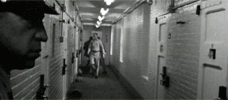
Titicut Follies
1967 -
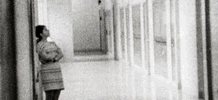
High School
1968 -

Law & Order
1969 -

Basic Training
1971 -
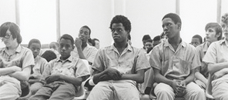
Juvenile Court
1972 -
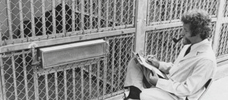
Primate
1974 -
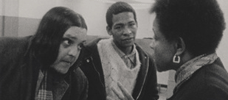
Welfare
1975 -
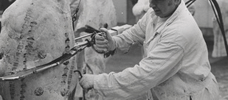
Meat
1976 -
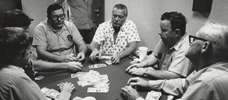
Sinai Field Mission
1978 -
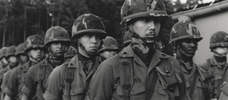
Manoeuvre
1979 -

Model
1980 -
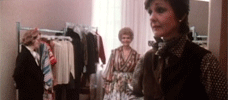
The Store
1983 -

Blind
USA -
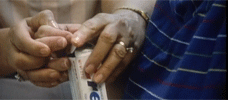
Adjustment & Work
1986 -

Missile
1987 -

Central Park
1989 -
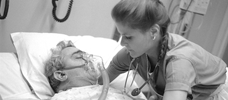
Near Death
1989 -

Aspen
1991 -

Zoo
1993 -
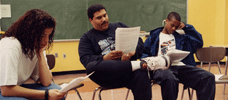
High School II
1994 -
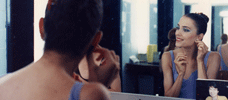
Ballet
1995 -
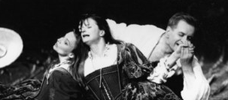
La Comédie-Française
1996 -
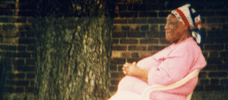
Public Housing
1997 -

Belfast, Maine
1999 -
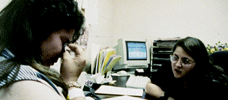
Domestic Violence / Domestic Violence 2
2001 / 2002 -
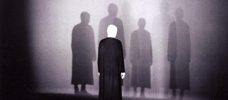
The Last Letter
2002 -

State Legislature
2006
We don’t do comments anymore, but you may contact us here or find us on Twitter or Facebook.



